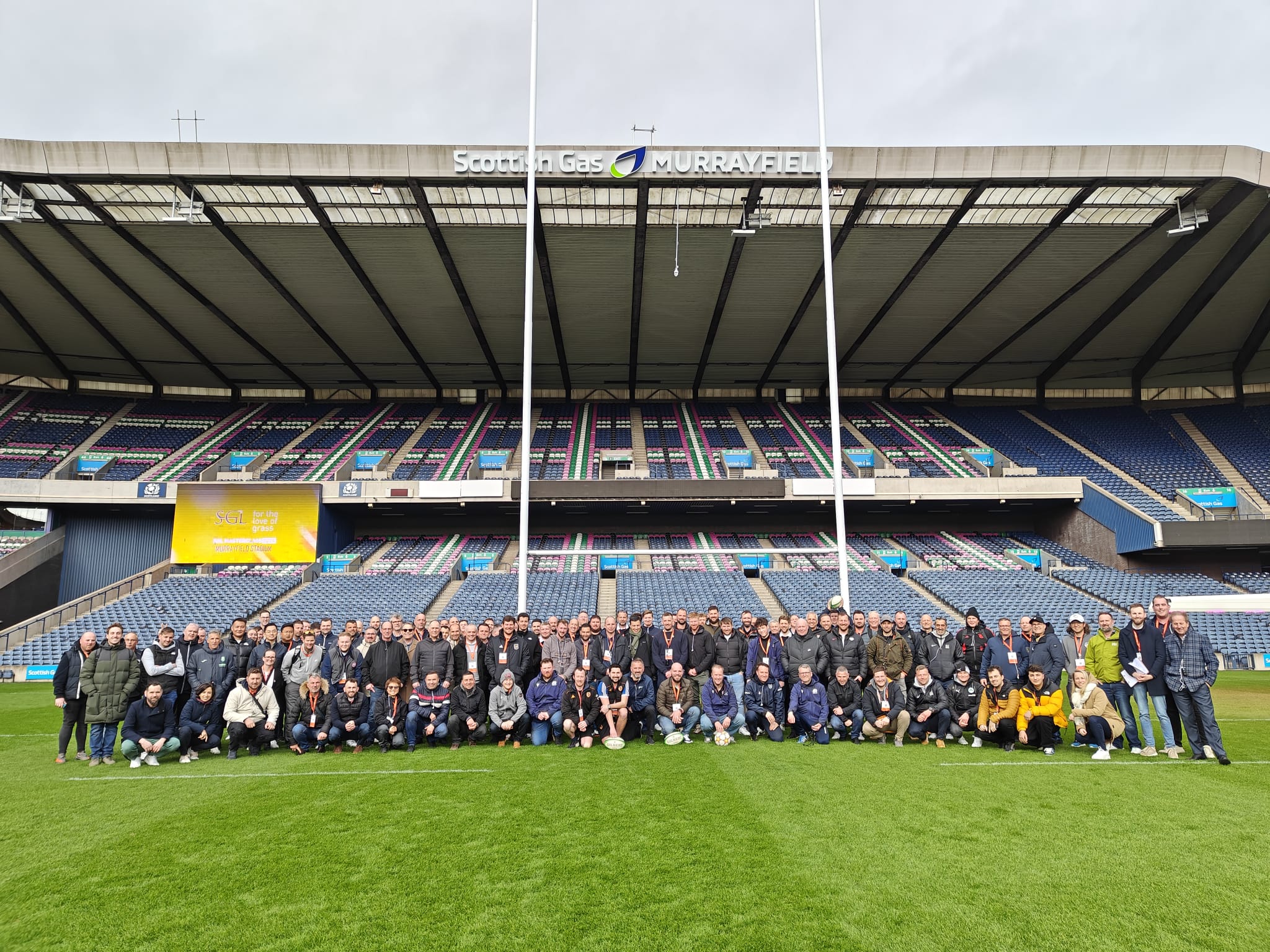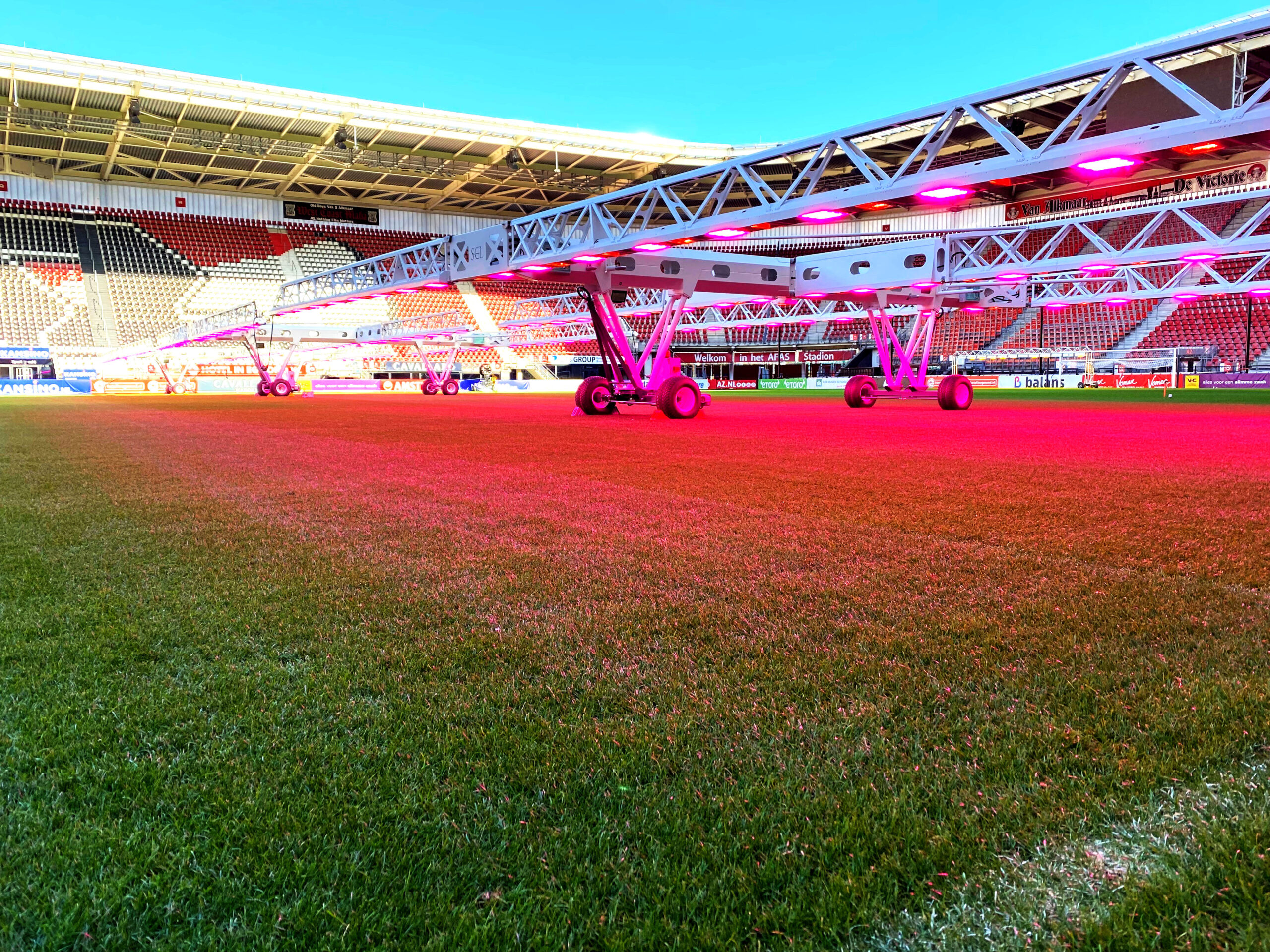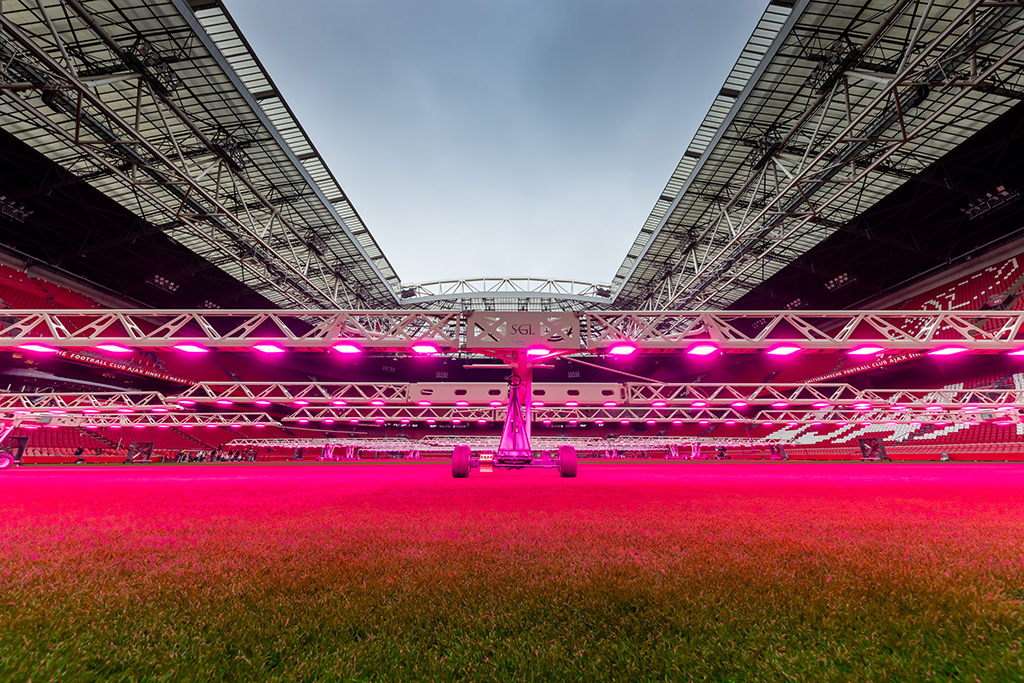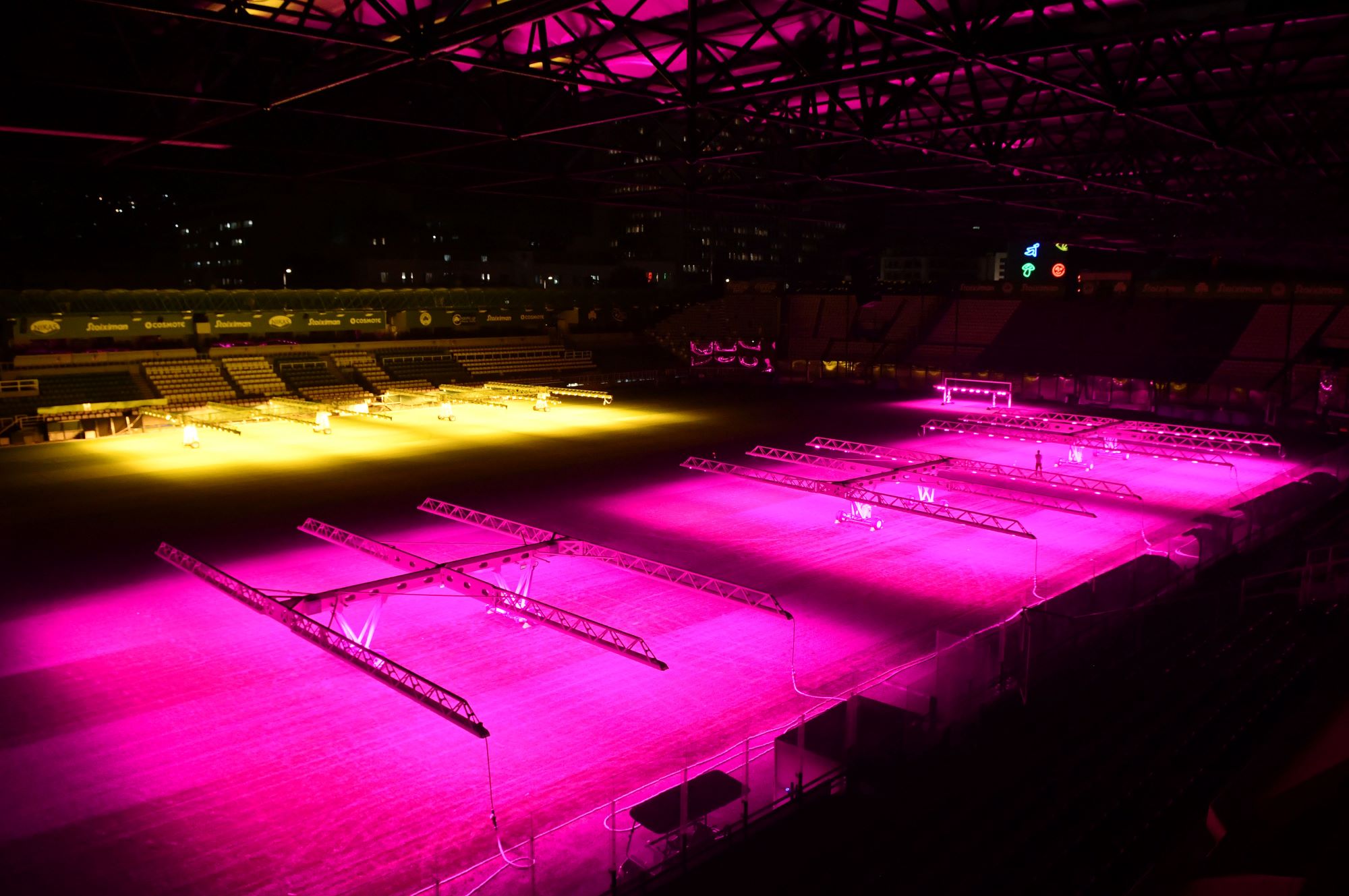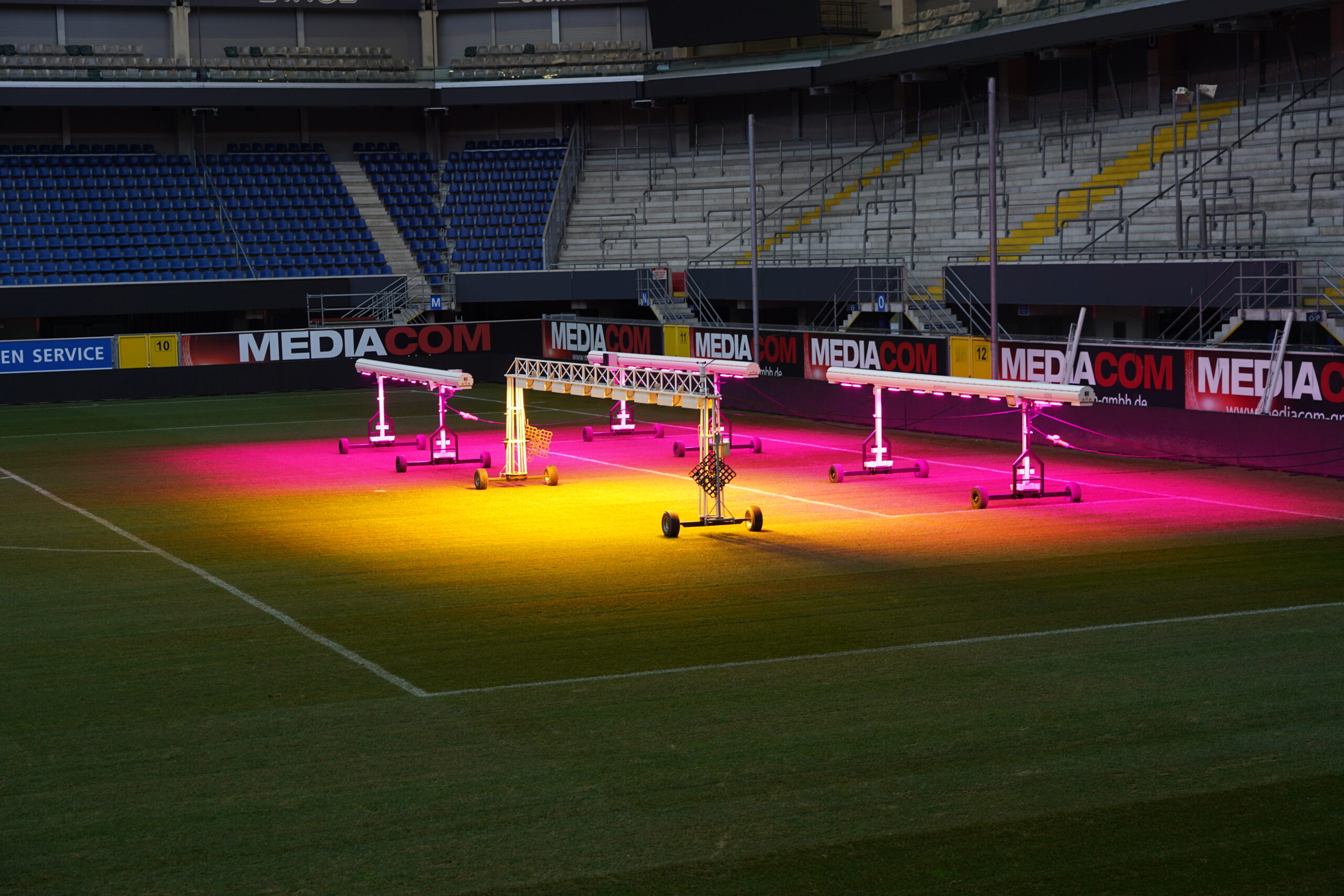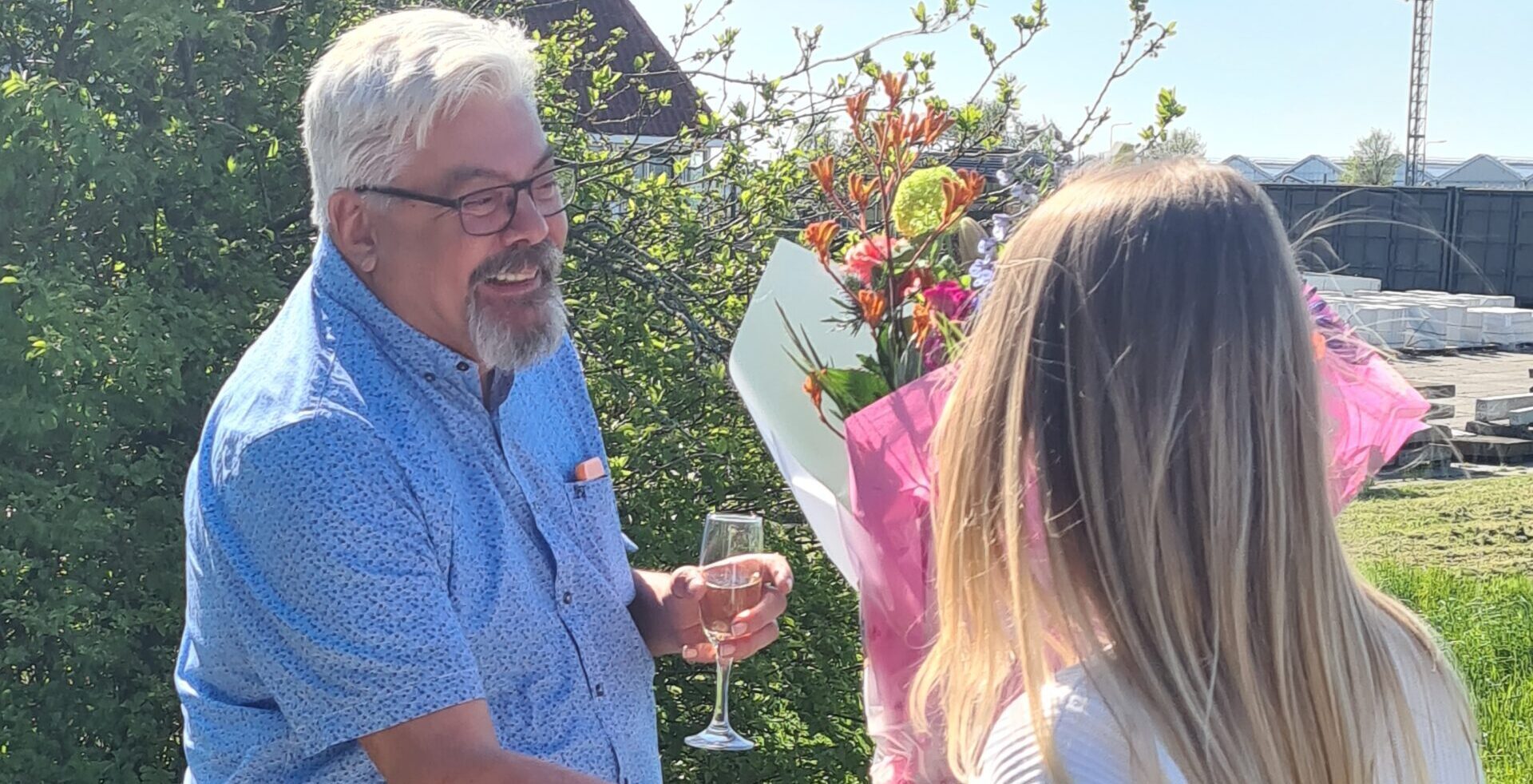Sporting Gijón and its grounds team are doing great in managing turf as well as expectations
Warm memories of helping her father at an early age influenced Eva Sánchez-Céspedes to pursue a career in turf management.

You would think they are easily recognisable by their red-white jerseys, white shorts, and blue socks. However, the outfit draws up a resemblance with kits of two other famous Spanish clubs: Athletic Bilbao and Atlético Madrid. Nevertheless, our focus here is undoubtedly on Sporting Gijón, an ambitious club in the northern region of Spain, Asturias, and its recently appointed Grounds Manager: Eva Sánchez-Céspedes.
We had the opportunity to ask her about how she got into the turf industry, what moved the club to purchase LED units and how she feels about data and reporting on her work.
One impressive resume
Talking to Eva, we soon got the impression that she already had completed a full career before transitioning to Sporting. While still young, her resume is impressive and the list of places where she worked is long.
After studying Agricultural Engineering, she worked at the Spanish Golf Federation through a scholarship, which laid the base for the activities that she would be carrying out later: think working with machines, aerification, and top dressings. That scholarship also brought her to the United States, where she followed a top programme for grass management in golf courses and did an internship at Alabama’s Shoal Creek golf course.
After returning to Spain, and a position at Vallromanes, a prestigious golf course in Barcelona, family pulled her back closer to Madrid. She was offered an important position at Novogreen, where she prepared the hybrid sod for Real Madrid’s Paul Burgess. It didn’t take long for Paul to ask Eva to join him: she started at Valdebebas, the training facilities of Real Madrid. A big responsibility, while managing 12(!) pitches, with great learning moments, she explains.
Passion for the job and the all-important role of Eva’s father
Undoubtedly, her passion for the job shows on her resume and it takes no expert to see Eva is a very skilled professional, having learned from other well-respected names in the field. But being asked about what made her pursue a career in this industry in the first place, she starts smiling as one important person in her life comes to mind:
“Well, my father was active in mechanical agriculture. He had (agricultural) fields and loved to do things there, but also was fixing tractors and equipment all the time. I grew up, driving a tractor on my dad’s knees, at the age of 5.
I realise that it’s really easy for me to work with bigger machines, and I love to go outside, get wet and cold, to work with my hands and be comfortable with that – ever since I was a child.
I don’t like to be in an office with a computer. I get bored. I prefer action.”, she adds with a grin.
“I don’t like to be in an office with a computer. I get bored. I prefer action.”
Transitioning to Gijón and the challenge of managing a stadium pitch
Eventually, Paul left Real Madrid and a new opportunity came to Eva: working at El Molinón for Sporting Gijón. Something she was looking forward to, but working as Head of Stadium was something new.
“The cycle of working in a stadium environment is more up and down. Your work is exposed to many people. You have to give it your best every two weeks, to have the pitch in perfect condition, no matter the circumstances. When you have shade, you realise that it has a great effect on the root zone of your grass, so you have to manage it differently. So in one hectare of the pitch, you have two different areas or in fact, two pitches to manage.”
The importance of grow lights and knowing what to ask for
Real Madrid’s Valdebebas was also the first place where Eva got to know the grass grow lights of SGL and what they could mean for the work of grounds managers. In effect, she has been working with SGL lights since 2018.
However, when Eva made the transition to Gijón, there were no grow lights yet. Eva had to convince the board of the club. She did not find that too big of a challenge.
“I was convinced that with lights I was able to make it. Why? Because I had the previous experience of working with the SGL grow lights. So, I think, when you are so sure of something, you transmit that. You don’t want something that is not real. Something that is not going to realise your objective.”
She later also asked SGL, through the assistance of Paul Burgess, to provide the club with a small test unit. SGL was more than happy to help out. But why the test if she was already convinced?
“To show the board that I could do it. I used the worst area of the pitch for the test, and I was making photographs each week and I also asked the President to come and see it. He realised that was the way to have a good pitch.”, she explains.
So far, the results have been right on PAR, for Eva and her team as well as the board of the club. However, sparring with the SGL agronomy team occasionally, she still sees room for improvement. Because the lights arrived in October this season (2023 – 2024), it’s expected that – with a complete lighting schedule for next season – the quality of the pitch can go up even more.
Sharing data for expected (and unexpected) improvements
The team of eight people strong is focusing on improving and learning on the job, recognising the importance of continued data collection, monitoring and sharing. However, she points out another discipline within the organisation that benefits from looking into those numbers: the medical department.
“We give the numbers of the firmness of the pitch to the medical team. They are trying to understand when they encounter a problem with the players, like a muscular problem, what the relationship could be with the pitch. Therefore, I share the numbers of each pitch, each week, and they try to find the number where the players actually are in the best condition.”
Being a widely discussed topic in the United States and the NFL lately, Eva sees the issue of player safety and the importance of sharing data, in a broader view and context.
“My reports had a transformation in time. In the beginning, my reports were just letters. I had to explain a lot about the pitches. Now, my reports are pages with numbers. Numbers and photo’s. With that, you have the idea of how the pitch is. For the board, for the department – you need objective data and numbers, and that’s it.”
The importance of knowing your pitch
Concluding, with so many moving parts, Eva finds it challenging to offer concrete advice to her peers. She has an all-important message to share though:
“If I have something that is working well for me, here in Gijón, and I tell you, maybe it will not work the same way for you. So we can share our knowledge or our experience, but you have to know your pitch. You have to feel it every day. You have to know your soil, your grass, how it’s going to change over the year, the influence of the water, what your equipment is, how many people you can use to do this… There are many things you have to think about and in every club, every groundsman has different strategies.
When you are in this profession, you need to know your pitch. Every pitch is different.”
As she moves on to another meeting, about the all-important topic of sustainability within the club, we still had a lot of questions to ask Eva. Luckily, however, we have another chance in March when she joins us as a panelist for the Masterclass 2024. Is she looking forward to that?
“Yes, very much!”
Read more customer stories.
